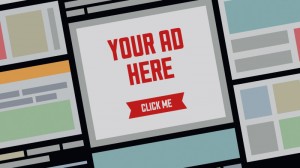
We can all pretty much universally agree that with native advertising comes the obligation of disclosure and transparency. That means clearly and unambiguously indicating that yes, this is an ad, and it was paid for by Acme Corporation.
Yet how to provide disclosure remains a murky area, hardly surprising given how quickly an extraordinarily wide variety of native advertising products have emerged on all sorts of platforms ranging from traditional publishers, to in-app and in-game ads, recommendation engines, display units and a host of other formats.
As the Word of Mouth Marketing Association (WOMMA) puts it in a newly released white paper on the topic, “the key principle is one of transparency.” Readers and consumers have the right to know (in WOMMA’s language) “when the content was written by or placed by a marketer, or someone acting on behalf of or at the direction of a marketer, rather than the publisher of the editorial content in which the sponsored content appears.”
And, as WOMMA correctly points out, the FTC has been issuing guidelines on disclosure dating back as far as the 1960s (advertorial) and as recently as search engine advertising (in this millennium).
WOMMA is calling for clear and conspicuous native advertising disclosure, as has the IAB. Yet WOMMA’s paper, while correctly flagging that native is clearly an evolving and therefore difficult to define sector, also asks an interesting question: who is disclosure incumbent on? The publisher? The brand? The marketer, agency or the “widget” (which can be interpreted as ad unit or vendor, but appears to refer to recommendation engines, e.g. Outbrain and Taboola)?
WOMMA has a distinguished history of working for ethics and disclosure in innovative forms of digital marketing, but in this case I’m not sure I agree with the question. In my view, the “who” is “everyone above,” but there’s one item on the list that bears the overwhelming burden of responsibility for ensuring disclosure guidelines are clear, transparent, unambiguous, and enforced, and that party are the publishers upon whose properties native ads appear.
Ethical publishers have always had advertising policies, standards and practices (as have broadcasters). This legacy of traditional publishing needn’t change significantly in digital channels. Additionally, these same publishers have long upheld church-and-state guidelines that govern how, when and sometimes, even if the publishing side of the house can interact with editorial (and vice versa).
The problem in native advertising now is that publishers, desperate for native advertising dollars, are too often adopting an “ads first, policies later” approach to the medium. In the process, the baby is at risk of being tossed out with the proverbial bathwater.
While WOMMA is to be commended for calling for more transparency and disclosure in native, it must be noted that the organization counts zero publishers as members. Overwhelmingly, it’s brands that comprise WOMMA’s membership. They’re to be applauded for the effort, but the rubber hits the road elsewhere.
The IAB does count lots of publishers among their members and that body has issued (only) two native advertising disclosure guidelines.
- Use language that conveys that the advertising has been paid for, thus making it an advertising unit, even if that unit does not contain traditional promotional advertising messages.
- Be large and visible enough for a consumer to notice it in the context of a given page and/or relative to the device that the ad is being viewed on.
Research my team and I published on native advertising goes further. We also recommend that disclosure be provided in a link that provides deeper information, as well as access to a channel for consumer inquiry. We also maintain that publishers establish, before (not after) native advertising products are developed and sold, clear church-and-state policies, something many, even the venerable New York Times have – quite shockingly – not yet addressed.
Setting transparency and disclosure guidelines for native advertising isn’t something anyone’s waiting for the FTC to do. The FTC last year called hearings on the topic, routine operating procedure. Just as they’ve done with email, search and word-of-mouth marketing, these hearing are a signal to the industry: “Regulate yourselves, or we’ll do it for you.” With the exception of email (which was already headed to Congress for legislation, the CAN-SPAM Act), this has been a clarion call for trade organizations to rally and set standards.
The IAB’s standards are fine, but inadequate. They simply don’t go far enough, unsurprising for a body devoted principally to advertising, not publishing. WOMMA wants to encourage marketers to lobby for publishers to uphold better standards. Noble, but unrealistic. The OPA has (characteristically) maintained a low profile. The American Press Institute held an excellent native advertising forum (at which I participated), but has issued no publisher guidelines.
As someone who has been deeply and actively involved in researching the topic of native advertising for a year and a half, this lack of response and initiative on the part of publishers is alarming, to say the least. Native advertising has many detractors and finger-pointers. Prominent and influential commentators such as Bob Garfield call it indefensible, duplicitous and unethical.
It needn’t be, and it shouldn’t be. But if publishers don’t get their houses in order, native advertising, which could be a salvation, will instead be their downfall. Publishers, after all, are the ones who create the product, and oftentimes, the content that comprises native advertising.
This column originally published on MarketingLand
